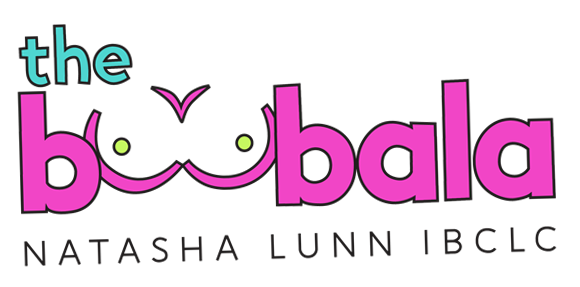Page Content
- How long after stopping breastfeeding did you ovulate?
- When does ovulation return after breastfeeding?
- Is it easier to get pregnant after stopping breastfeeding?
- How will I know if I’m ovulating after having a baby?
- How long does it take a nursing mother to ovulate?
- How long are you highly fertile after having a baby?
- Can breastfeeding cause a positive ovulation test?
- What is the soonest a woman has gotten pregnant after giving birth?
- How likely is a breastfeeding mother to get pregnant?
- Is it harder to get pregnant after breastfeeding?
Understanding Ovulation After Breastfeeding
The journey of postpartum recovery is unique for every mother, particularly when it comes to the return of ovulation after childbirth. For many breastfeeding mothers, the timeline for ovulation can be significantly influenced by their breastfeeding practices.
The Role of Breastfeeding in Ovulation
Breastfeeding is known to delay the return of ovulation and menstruation, a phenomenon often referred to as lactational amenorrhea. This delay is primarily due to the hormonal changes that occur during breastfeeding. Prolactin, the hormone responsible for milk production, inhibits the hormones necessary for ovulation. As a result, many women experience a prolonged period without menstruation while exclusively breastfeeding.
Research indicates that for most breastfeeding mothers, ovulation typically resumes within 3 to 6 months after giving birth. However, this timeframe can vary widely based on several factors, including the frequency and exclusivity of breastfeeding. Mothers who breastfeed exclusively may find that their periods do not return until they begin to introduce solid foods or reduce the frequency of breastfeeding sessions.
Variability in Return to Menstruation
While some women may notice signs of ovulation as early as three months postpartum, others may not see a return to their menstrual cycle for 9 to 18 months. This variability can be attributed to individual differences in hormonal levels, maternal age, and the overall breastfeeding pattern. For instance, mothers who supplement with formula or who have longer intervals between breastfeeding sessions may experience a quicker return to ovulation.
Signs of Ovulation
As ovulation approaches, mothers may notice certain signs, such as changes in cervical mucus, increased libido, or even ovulation pain. Tracking these signs can be helpful for those who are trying to conceive or wish to understand their fertility better during this transitional period.
Conclusion
In summary, while breastfeeding can significantly delay the return of ovulation, most mothers can expect their cycles to resume within a few months to over a year after childbirth. The exact timing is influenced by individual circumstances, including breastfeeding practices and hormonal changes. Understanding these dynamics can empower mothers to make informed decisions about their reproductive health during the postpartum period.
How long after stopping breastfeeding did you ovulate?
By 15 weeks all bottlefeeding mothers had resumed ovulation and menstruation. By contrast, all breastfeeding mothers who breastfed for a mean of 40 weeks maintained elevated basal prolactin levels for longer than the bottlefeeders. The mean time to 1st ovulation was 36 weeks with a range between 15-66 weeks postpartum.
When does ovulation return after breastfeeding?
If you are exclusively breastfeeding, meaning the baby only receives breast milk and occasional water, the return of menses and ovulation is on average 6 to 10 months.
Is it easier to get pregnant after stopping breastfeeding?
If you have problems ovulating, or the second half of your menstrual cycle is not long enough to begin a pregnancy, you may need to wean your child for the best chances of success. Women whose periods don’t return until they have fully weaned their babies may also need to wean to allow ovulation to occur.
How will I know if I’m ovulating after having a baby?
Any change in your vaginal mucus or any bleeding may be a sign of a change in your hormone levels and a return to being fertile. Unless you know your signs of ovulation very well, you probably won’t know for sure that you are fertile again until you have your first period after giving birth.
How long does it take a nursing mother to ovulate?
The return of fertility
Breastfeeding and the hormones that go along with milk production can suppress ovulation from returning. If you’re not breastfeeding, ovulation usually doesn’t return until at least six weeks postpartum for most women.
How long are you highly fertile after having a baby?
It can sometimes take up to a year for your periods and fertility to get back to normal. Generally, you are advised to waiting at least 2 years after giving birth before getting pregnant again.
Can breastfeeding cause a positive ovulation test?
Also, recent oral contraceptive use, breastfeeding, or pregnancy could affect the test results. concentrated and may give a false positive result. Any other time of day is suitable. For best results, collect your urine at approximately the same time each day.
What is the soonest a woman has gotten pregnant after giving birth?
How soon can you get pregnant after giving birth? It’s possible to get pregnant before your first postpartum period, which can occur as early as four weeks after giving birth or as late as 24 weeks after baby arrives (or later), depending on whether you’re breastfeeding exclusively or not.
How likely is a breastfeeding mother to get pregnant?
About 2 out of 100 people who use breastfeeding as birth control get pregnant in the 6 months it can be used after a baby is born. Breastfeeding won’t prevent pregnancy if you feed your baby anything other than breast milk. So if you breastfeed but also use formula, LAM isn’t a great birth control method for you.
Is it harder to get pregnant after breastfeeding?
Women who breastfeed their children have a longer period of amenorrea and infertility following delivery than women who do not breastfeed. The length of postpartum amenorrhea varies greatly and depends on several factors, including maternal age and parity and the duration and frequency of breastfeeding.

